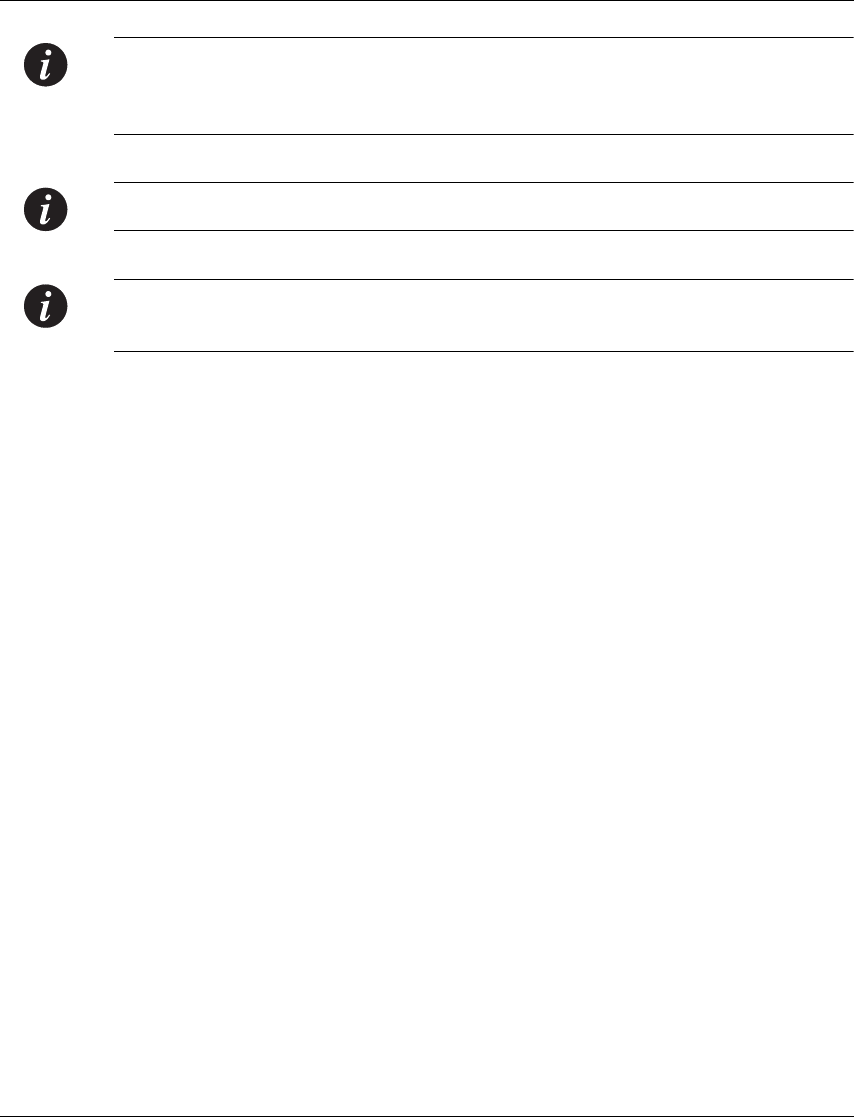
Frame Relay Encapsulation
Avaya X330WAN User’s Guide 47
Note: In X330WAN, OSPF is mapped by default to the High Priority DLCI. For
better network reliability, it is recommended to verify that the same configuration
exists on the other side of the Frame Relay connection.
Note: If one of the priority DLCIs is down, its traffic is dropped.
Note: Map the PVC control protocol on the routers at all ends of a multi-VC
point-to-point link. Map this VC to the highest priority DLCI.
Traffic Shaping and Marking
The policing function estimates the parameters of the incoming traffic and takes
action if it measures traffic exceeding agreed parameters. This action could be to
drop the packets, mark them as being high-drop priority, etc.
X330WAN supports the following Traffic Shaping parameters per PVC:
•CIR - Committed Information Rate
• DE pre-mark - Enables marking certain packets as Discard Eligible (DE).
• Link Fragmentation and Interleaving (LFI) - Enables fragmentation of large
Frame Relay frames per PVC.
You configure the Traffic Shaping parameters within Map Classes. A Map Class is
comprised of the following parameters:
• CIR - Default = 56,000bps
• BC - Committed Burst size, default = 7,000 bps
• BE - Excess Burst size, default = 0 bps
• DE-premark - Specifies the amount of non-high priority (0-5) packets over the
BC and under the BE to label as DE. This amount is measured in percentage of
CIR. The default is 100%, unconditionally dropping all packets above the BE.
• Fragmentation - Fragment size, in bytes. The default is No Fragmentation.
You can configure up to 128 different Map Classes using different combinations of
Traffic Shaping parameters. You then apply these Map Classes to either the Primary
VC or to the priority-DLCI group VCs.


















